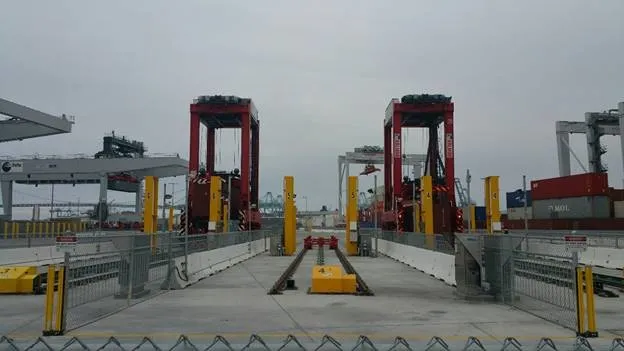All containerized cargo coming into seaports in the United States is scanned by radiation detection equipment. Recently a new radiation detection system began operating at the Trans Pacific Container Service Corporation (TraPac) terminal at the Port of Los Angeles in California. The new system automatically scans inbound cargo for nuclear and other radioactive material.
Cargo bound for rail transport is placed on conveyers by automated straddle carriers. The conveyers then move the cargo through Radiation Portal Monitors for scanning. This innovative approach facilitates the flow of trade while protecting the United States from nuclear threats.
The effort to develop this new system was truly collaborative. As TraPac planned to move to an automated terminal, U.S. Customs and Border Protection needed a new method to scan ship-to-rail containers for radioactive material. After TraPac approached DHS with this new scanning concept, DHS worked with the Pacific Northwest National Laboratory (PNNL) to extensively test, evaluate, and approve the systems for live rail operations.
Approximately 2 million containers are processed through the TraPac terminal every year. This new solution offers a more efficient approach to preventing illicit nuclear and other radioactive materials from entering the U.S.

